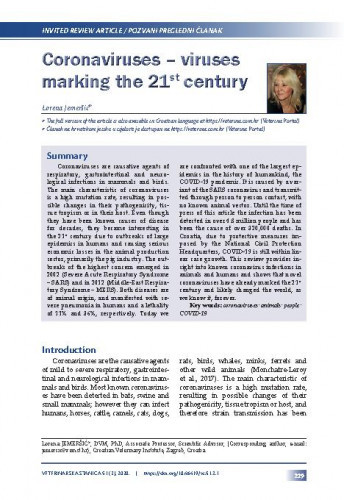Na današnjem prostoru Republike Hrvatske (RH) na srednjovjekovnim dalmatinskim otocima i u gradovima već od 13. stoljeća postoje zakonski propisi (statuti) koji reguliraju život zajednice, kao i odnos ljudi prema životinjama. U 18. stoljeću kako u Europi tako i na prostorima današnje RH, zarazne bolesti domaćih životinja desetkovale su stočni fond, posebno u govedarstvu. Uz goveđu kugu, bedrenica, metiljavost, bjesnoća, slinavka i šap, sakagija i druge bolesti stvarale su velike probleme stočarstvu koje je bilo važan preduvjet sigurnog opstanka ljudskih zajednica. Od 1770. godine liječnicima je, uz liječenje ljudi, bila obveza i suzbijanje zaraznih bolesti domaćih životinja. U suzbijanju zaraznih bolesti glavnu je ulogu imao podžupan, a u to doba suci su bili upravni činovnici. Stoga su kod pojave zaraznih bolesti domaćih životinja na teren išli veliki i mali sudac, a uz njih je obvezno bio prisutan i liječnik ili kirurg. Od 1771. godine u kotarevima je postavljen komesar, koji je išao na teren i izvješćivao sanitetsku komisiju. Za pojedine zarazne bolesti domaćih životinja upotrebljavali su se nazivi na latinskom jeziku: Lues animalium, Lues pecoris, Lues mali, Lues pecoris grassanti, Pulmonum exsccationis, Contagion, Morbus bovi, Animalium infectionem, Vulkgo metily i drugi, ali najčešće na njemačkom jeziku Viehseuche.; Within the present day territory of the Republic of Croatia, laws have been in place on the central Dalmatian islands and cities since the 13th century regulating daily life in the community and human relations towards animals. In the 18th century, here and elsewhere in Europe, infectious diseases of domestic animals decimated the livestock fund, particularly cattle. Bovine plague, anthrax, fasciolosis, rabies, foot and mouth diseases, malleus and other diseases incurred great damages to animal husbandry, which has been one of the most important preconditions for the survival of human communities. Since 1770, medical doctors were also responsible for the prevention and control of infectious diseases in domestic animals. In this regard, the main role was held by the deputy county prefect, and at that time, judges were government officials. Thus, in cases of a high incidence of infectious animal disease, field inspections were performed by a higher and lower judge, who had to be accompanied by a medical doctor or surgeon. Beginning in 1771, all districts appointed a commissar, who performed field inspections and reported the findings to the sanitary commission. For individual infectious diseases of domestic animal terms in Latin were used, such as: Lues animalium, Lues pecoris, Lues mali, Lues pecoris grassanti, Pulmonum exsccationis, Contagion, Morbus bovi, Animalium infectionem, Vulkgo metily etc. However, German terms were most frequently used, such as Viehseuche.
Sažetak

 Veterinarska stanica : 51,3(2020) / glavni i odgovorni urednik Marko Samardžija.
Veterinarska stanica : 51,3(2020) / glavni i odgovorni urednik Marko Samardžija.